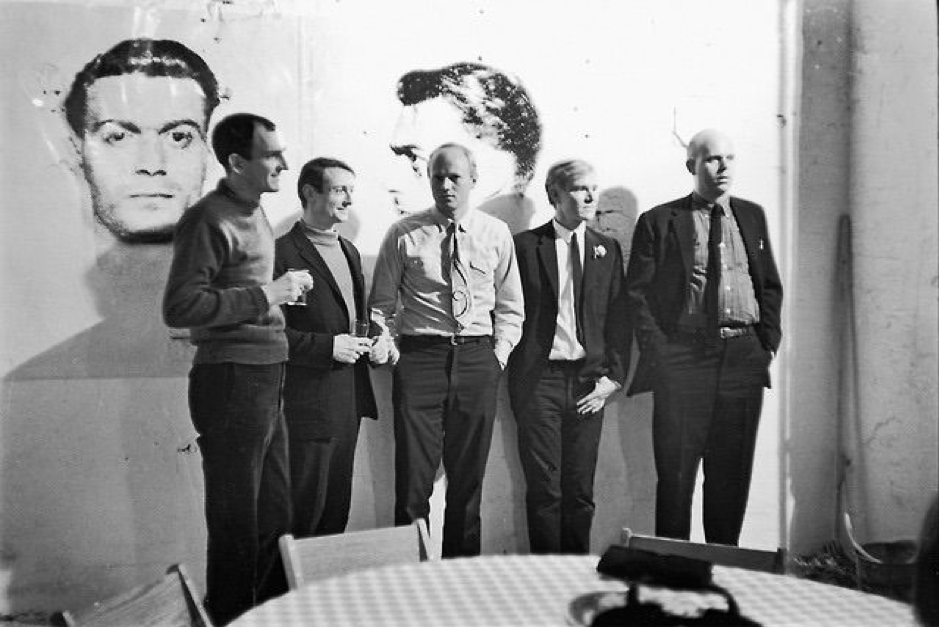
On the 11th of September, Visualising the Sixties, opened at Galerie Thaddaeus Ropac in London. The exhibition is a retrospective of James Rosenquist’s work, an artist that is claimed by many to be one of Andy Warhol’s favourites. A fellow Pop Artist with a more surrealist tone Rosenquist, like Warhol, made his move from advertising to art. Yet unlike Warhol, Rosenquist is only just starting to become a household name of Pop Art in Europe. This exhibition marks a steadily increasing interest in 1960s America in Europe and the UK. With both the success of Quentin Tarantino’s new movie, Once Upon a Time in Hollywood… and the announcement of the Andy Warhol exhibition coming to the Tate Modern in London in March, the UK seems to be undergoing an unprecedented spike in interest in Pop Art.
It has been nearly 60 years since James Rosenquist quit his job painting commercial billboards in New York City in order to pursue fine art. His background in creating signs and advertisements is prominent when we observe his work. Both utilizing the techniques of printing billboards and playing with the commercialist content of posters, Rosenquist married these two elements of his advertising career with the world of fine art to create a new sub-section of Pop Art, unique to his own practice. Mimi Thompson Rosenquist, the late artist’s wife, notes that Rosenquist was never satisfied with the term ‘Pop Art,’ as he saw his work and the work of Warhol and Lichtenstein as sharing only the use of commercial imagery. He argued that ‘Pop Artists’ all played with the idea of advertisement in such differing ways that to unite them under one movement with a single title seemed reductionist.

In spite of this, Thompson Rosenquist also notes that the art world was smaller and less competitive then, so relationships between the artists, who we now refer to as the key players in Pop, were extremely close. They often discussed and exchanged ideas.
She recalled that every time Warhol would see Rosenquist he would remark ‘Jim, you know you’re my favourite artist,’ and James would reply ‘No, Andy, you’re my favourite artist.’ This kind of support, Thompson Rosenquist argues, comes primarily from the fact there was little money to be made in the art world at that time. This created a unique artistic environment where designs and concepts were to be discussed and shared rather than kept for oneself.
Visualising the Sixties is an in-depth look at this momentous era through the lens of Rosenquist’s work. Focusing on both his early pieces and the wide variety of mediums he uses, this retrospective brings some of his works from all over the world to the UK for their first time ever. One such piece is Forest Ranger. On loan from Museum Ludwig in Cologne, Forest Ranger is an interactive free-hanging painting of a World War II armoured vehicle. The image, lifted from a General Motors Chevrolet advertisement, is paired with images of ‘slicing’ technology. Painted on hanging strips of Mylar, the viewer is invited to walk through the vividly coloured, polyester image of tank and saw. The viewers’ interaction with the piece calls into question traditional modes of viewing and aims to subvert the established and conventional display of fine art as well as adhering to surrealist sensibilities.

Another seminal work by Rosenquist on display is The Light that Won’t Fail I. This six-coloured canvas marked the beginning of Rosenquist’s long and successful career. Demonstrating the cool command of many mediums, this work is made up of painting, printing and collage and proves Rosenquist to be a true master in the juxtaposition of pre-existing images. The left-hand side of the canvas displays an image of a woman, lifted directly from a Phillip Morris advertisement. The swirling dark background contrasts starkly with her milky skin yet the curves of her profile almost mirror the deep mysterious undulations of her surroundings, creating simultaneously a sense of harmony and discord. This image is intersected with a pair of legs wearing socks and is framed by an oversized comb. The seemingly disparate images that make up this canvas are perhaps only united by colour and in some sense, their vague commercial origin. Yet, their true relationship relies upon the mind of the individual viewer. In this way, we can argue that Rosenquist manages to marry both the commercial images of Pop Art with the dreamlike internal landscape of Surrealism and in doing so inspired a new direction for Pop Art. This merging of genres and mediums is perhaps why it has taken so long for Europe to catch up with the artistic phenomenon that is Rosenquist, yet Visualising the Sixties proves that it is never too late to celebrate genius.
By Ella Thomas
History of Art Undergraduate at the University of Oxford

